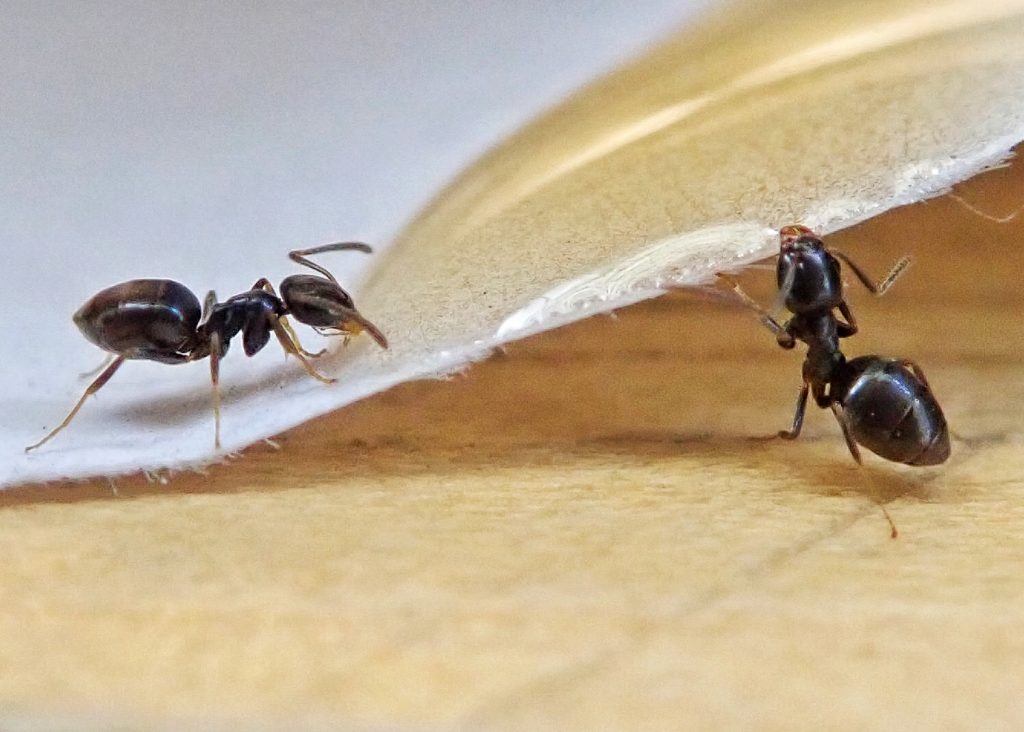
The Odorous House Ant is yet another insect which invades our homes in autumn. Their common name comes from an acrid odor they produce as a defense mechanism, having no stinger with which to defend themselves.
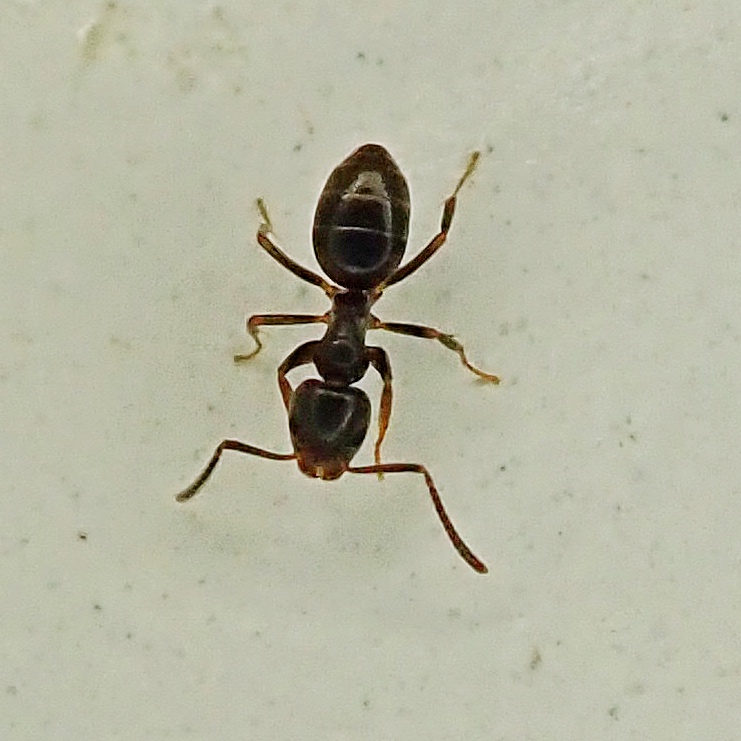
These little (workers, which are female, and are the most commonly seen ants, are 1.5-2.5mm long) Hymenoptera are native to North America. They can set up nests indoors, usually in walls, and outdoors their nests are found under logs, stones, and leaf litter. The nests may contain several queens, and thousands of workers. They were one of the most common ants in the blast zone during the first few years after the eruption of Mt. St. Helens in 1980. A colony may be active for years, but the founding queen and the workers die off in about 8 months.
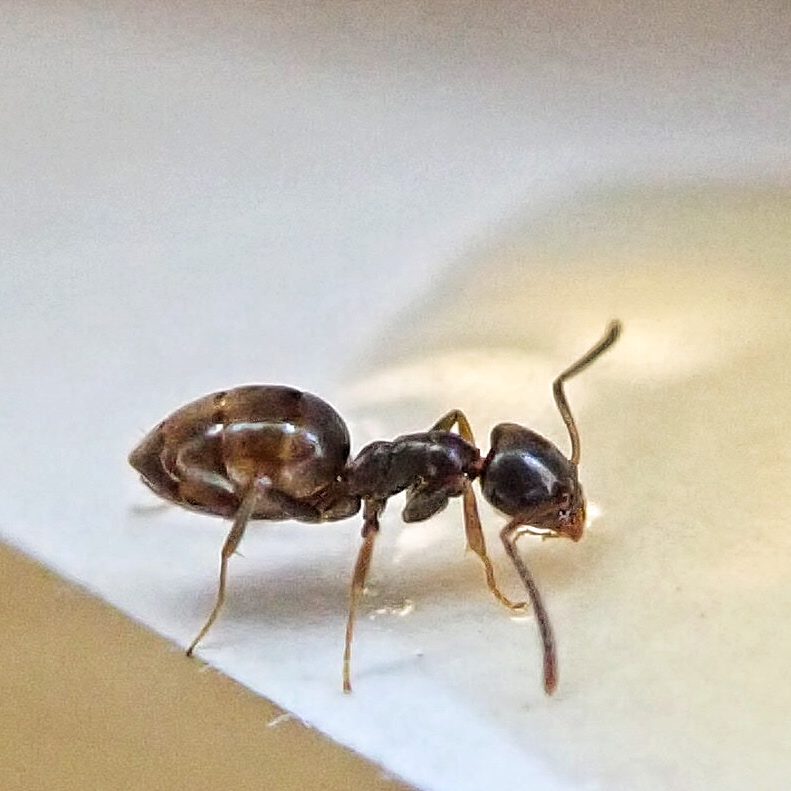
In the wild they tend aphids like livestock for their honeydew, and also feed on dead insects and fruit. Indoors they are mostly looking for sugar and sugary substances.
I apologize for the grainy quality of these photos. They are tiny, so I had to enlarge the photos quite a bit. And they never quit moving so my focus stacker was useless.
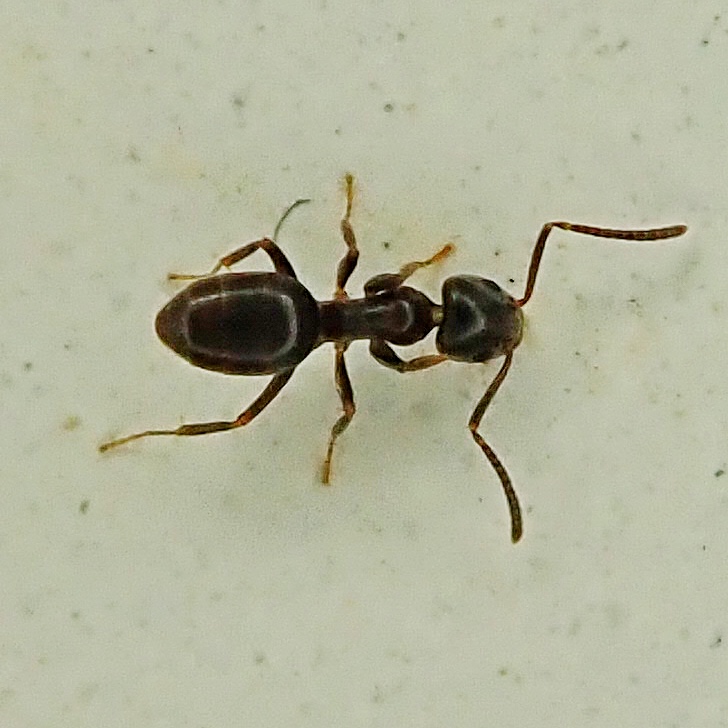
Like most ants the queens of Tapinoma sessile have wings to enable them to travel some distance to a new nesting site. They lose them once reproduction starts. Males also have wings, but they die soon after fulfilling their reproductive function. Their lifespan is about a week.
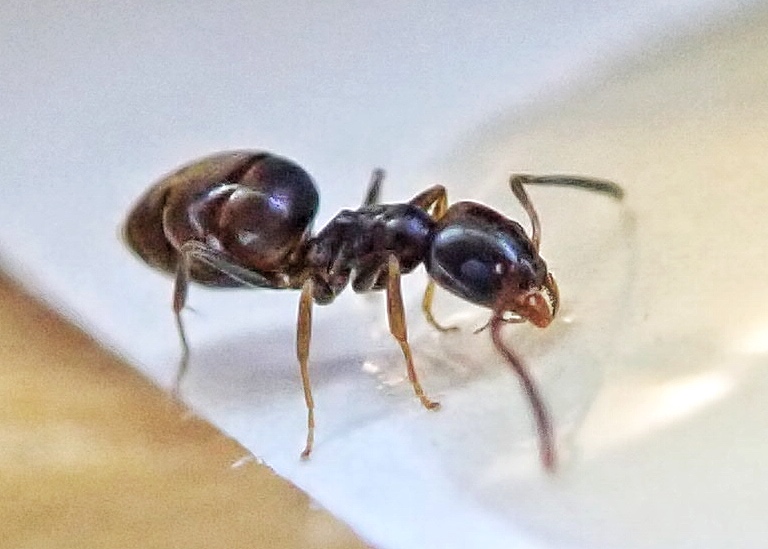
Workers do not have wings. They scurry about on their 6 legs trying to locate food sources, then lay down a pheromone trail back to the nest that other workers may follow to the food stuffs. Worker ants not involved in foraging tend to the aphids and to the queen’s eggs, which take 2-3 weeks to hatch.
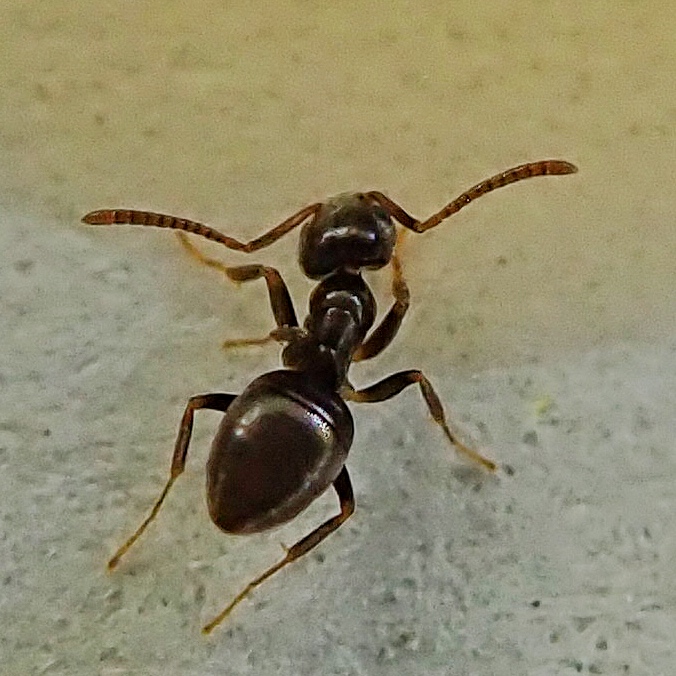
Tapinoma comes from the Greek for dejection. This may refer to its general insignificance, or to the slightly flattened head and gaster (abdomen). The species epithet sessile means stalkless, because the petiole which connects the gaster to the thorax appears to be absent, when in fact it is just very small and connected at the bottom of the gaster, rather than in the middle.
Many thanks to Eric R. Eaton for confirming my identificationof these ants!
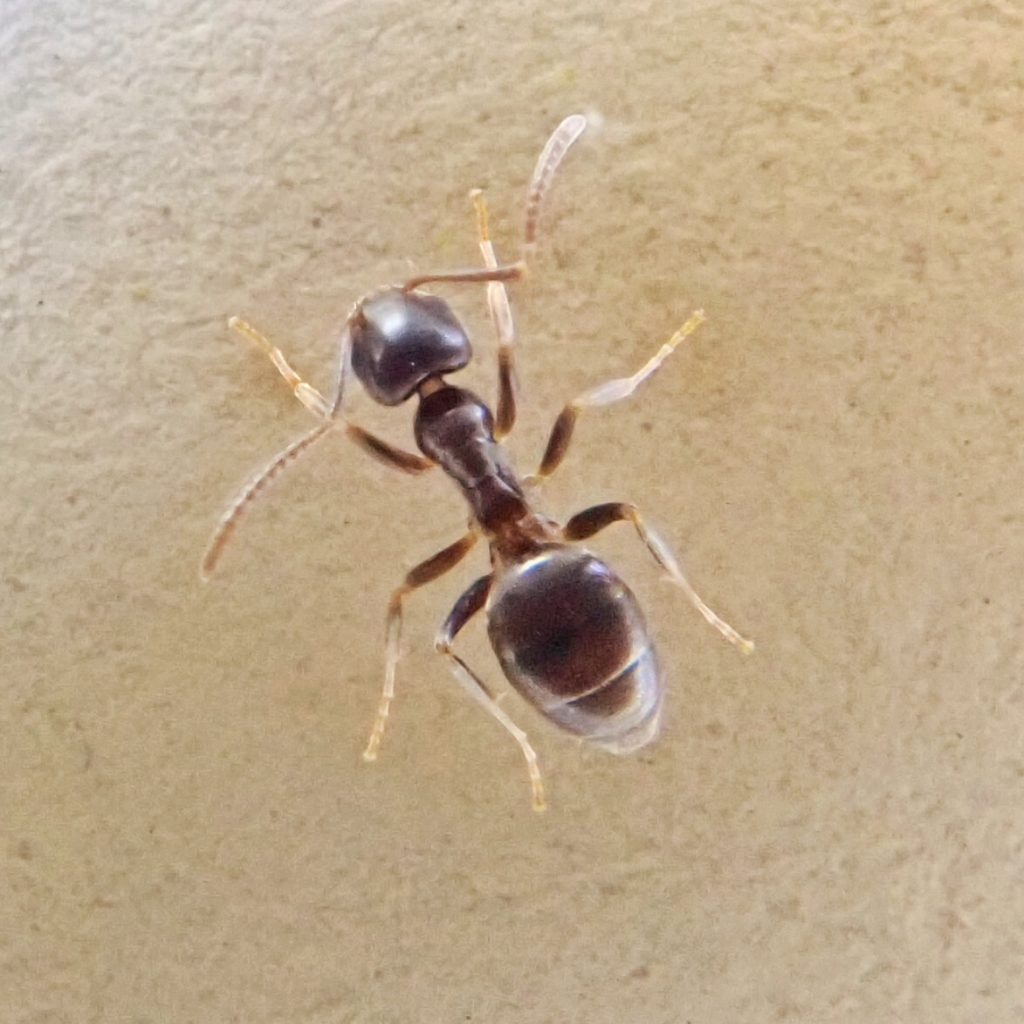
https://antwiki.org/wiki/Tapinoma_sessile
Size- Workers 1.5-2.5mm; Queens 4-5mm
Habitat- May be found anywhere
Range- Region wide
Eats- Honeydew, decaying fruit, dead insects; in anthropogenic setting they focus on sugars and sugary crumbs
Flight Season- Colonies active March through October
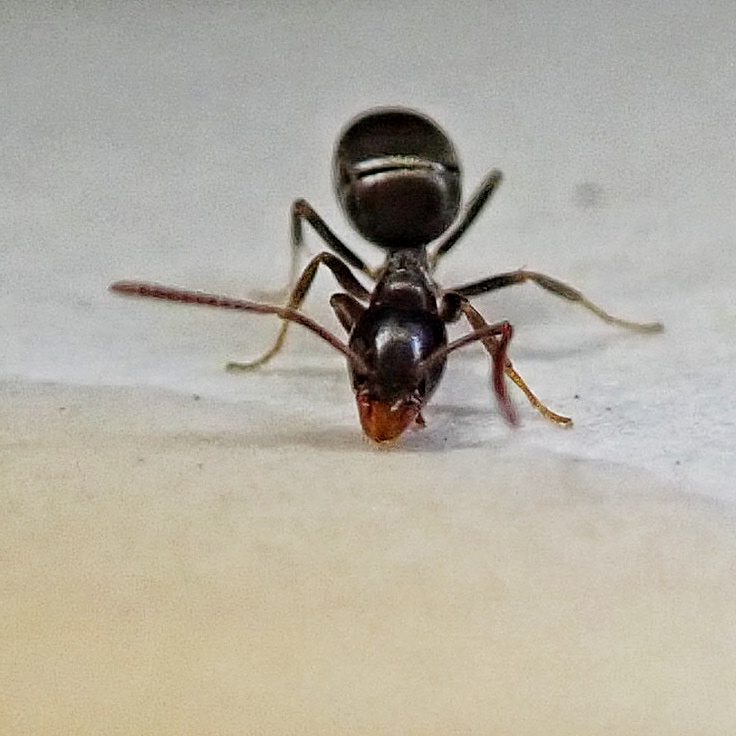
Any idea on gestation period of eggs?
2-3 weeks. Then 2-4 weeks as larvae.
Fascinating! Really feels better when we understand what we are dealing with these industrious little pests! 🙂